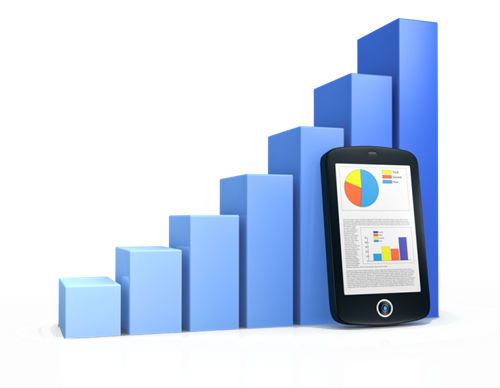The majority of large companies have been effectively addressing a fast growing mobile customer base, however  many more businesses are only just starting to consider their mobile strategy and their customer’s mobile experience in order to establish their brand.
many more businesses are only just starting to consider their mobile strategy and their customer’s mobile experience in order to establish their brand.
MOVE OVER ONLINE, MOBILE IS POISED TO HIT MAINSTREAM
Some leading banks have already seen the number of mobile interactions overtake the number of online interactions. The evolution of mobile devices coupled with rising smartphone and mobile banking adoption is evolving banking customers’ needs and will fundamentally change the way eBusiness professionals need to view technology and customer support. We expect mobile banking to grow rapidly over the next few years, but digital banking teams will have to overcome many challenges to stay on par with Forrester’s projected growth, or risk being left behind. In our recent report The State Of Mobile Banking 2012, we help eBusiness and channel strategy professionals understand the most important trends in mobile banking, including:
Mobile banking will soon be mainstream.
Fueled by the adoption of smartphones and the growing supply of mobile banking, the use of mobile banking has grown steadily over the past few years. We expect the number of US mobile banking users to double in the next five years and reach 108 million by 2017 — 46% of US bank account holders.
Everyday banking relationships are moving to mobile.
Consumers are progressing from simply checking their account balances or locating an ATM to making bill payments or transferring money to other accounts on their mobile phones. As that happens, mobile banking is displacing use of other channels like branches and online banking.
Digital banking leaders face many big barriers.
Building mobile banking is more complex than building online banking was a decade ago. eBusiness executives face familiar challenges like changing customer perceptions, securing budget, and measuring success as well as new ones like managing the rapid pace of change, device fragmentation, and rising development costs.
Mobile banking and mobile payments will steadily converge.
Banks need mobile banking to provide a platform for mobile payments and to protect their retail payments businesses from digital disruption.
You can view the original article here.
By combining the advantages of a mobile app marketing strategy with a strong purpose for your app that concentrates on the end-user’s experience, can help ensure your success.

